EUROPEAN PROJECTS
BEcome ATTRACTIVE – Visual Literacy in adult education
The Project
BEcome ATTRACTIVE – Visual Literacy in adult education
Project number: 2022-2-RO01-KA210-ADU000097221
2023 -2024 (14 mesi)
Partner
CREATIVE PROJECTS AND EVENTS (Romania) – https://www.creativepro.ro
UN-LAB (Italia) – https://www.un-lab.it/
Summary
The project, submitted under the Erasmus+ programme, aims to promote digital transformation in adult education in Romania and Italy by enhancing the key competences of trainers and educators in the field of visual literacy. The specific objectives include increasing critical thinking among professionals in the adult learning sector, introducing innovative and modern training processes, and improving skills in visual communication and visual literacy. Planned activities include focus groups, the creation of a handbook, online and national training, and dissemination events.
Project Objectives
- Increase Critical Thinking: Enhance critical thinking among professionals in the adult learning sector in Romania and Italy, raising awareness of the current educational needs of adult learners and promoting greater inclusion and participation of low-skilled adults.
- Introduce Innovative Training Processes: Contribute to the introduction of innovative and modern training processes in adult education by sharing the project results in at least 10 adult education centers in each partner country.
- Improve Visual Communication Skills: Increase the skills and competencies in visual communication and visual literacy of at least 10 adult teachers, trainers, and educators in Romania and Italy through the implementation of two national training courses.
- Produce Tangible Results: Create a handbook that introduces users to the fundamental issues related to visual literacy and provide online training to equip educators with the skills needed to effectively use images and visual media in their educational programs.
- Promote Environmental Awareness and Inclusion: Use visual communication to raise awareness of environmental issues and promote inclusion, contributing to the fight against prejudices and stereotypes.
Target Groups
1. Direct Targets:
- Adult education teachers
- Adult trainers
- Educators
- Trainers’ training providers
2. Indirect Targets:
- Young adults
- Low-skilled adults
- Adult learners in general
Project Results
I. Handbook – “New Visual Communication Tools and Methodologies”
This handbook introduces users to the basic concepts of visual literacy and provides concrete examples of educational materials developed through new visual communication tools and methodologies. The handbook also includes a list of free online tools and theoretical content.
II. Online Training – “Visual Literacy”
1. Introduction
Videos, slides, and self-assessment tests aimed at providing a set of skills that enable participants to effectively find, interpret, evaluate, use, and create images and visual media. Through these training materials, participants will acquire key competencies to analyze and understand the contextual, cultural, ethical, aesthetic, intellectual, and technical components involved in the production and use of visual materials, with particular attention to using positive images and messages to raise awareness on environmental and inclusion issues.
2. Expected results
- Understand and Apply Visual Communication: Gain a deep understanding of the basic principles of visual communication and its effectiveness in adult education.
- Use Digital Tools for Creating Visual Content: Develop practical skills in using free online tools for graphic design, photo editing, and video editing.
- Integrate Visual Media into Educational Paths: Effectively integrate videos, infographics, concept maps, and other visual representations into educational materials.
- Analyze and Evaluate Visual Content: Improve the ability to critically evaluate images and visual media in terms of context, culture, ethics, aesthetics, intellectual, and technical components.
- Promote Inclusion and Environmental Awareness: Use visual communication to promote positive messages and raise awareness on environmental and inclusion issues.
- Create Original Visual Content: Develop skills in creating original visual content that goes beyond merely reproducing existing materials.
This chapter introduces the importance of visual communication in adult education, explaining how the use of images, videos, and other visual media can enhance teaching effectiveness. Strategies and tools for integrating visual communication into educational pathways will be presented, along with practical examples of success.
This chapter explores the use of new visual communication tools in digital media for adult education. Various free online tools for graphic design, photo editing, and video editing will be described, and how these can facilitate visual learning and increase student engagement.
This chapter provides a practical guide to creating visual content for classroom use. Practical examples of using tools like Canva and Snapseed will be shown, along with tips and tricks for optimizing the creation of educational visual materials.
This chapter will analyze the effects of new visual communications on cognitive processes such as attention, memory, and reasoning. The cognitive foundations of visual communication and the educational implications for improving adult learning will be explored.
This chapter will explore visual communication techniques that can increase empathy and mutual understanding, overcoming prejudices and stereotypes. Historical and contemporary examples of images and videos that have influenced social change will be analyzed.
This chapter illustrates how visual media can be used to raise awareness on environmental issues and promote sustainable behaviors. Examples of effective campaigns will be presented and their social impacts discussed.
This chapter will explore key theories and practical methodologies for the effective use of visual communications in new media. Theoretical foundations and practical methodologies for integrating visual media into educational processes will be described.
Self-assessment test of the skills acquired during the training course. This test is designed to help you reflect on the knowledge and skills you have developed, assessing your understanding of the topics covered in the various chapters. Answer each question carefully and honestly. At the end of the test, you will receive personalized feedback based on your score, guiding you on how you can further improve your skills.




